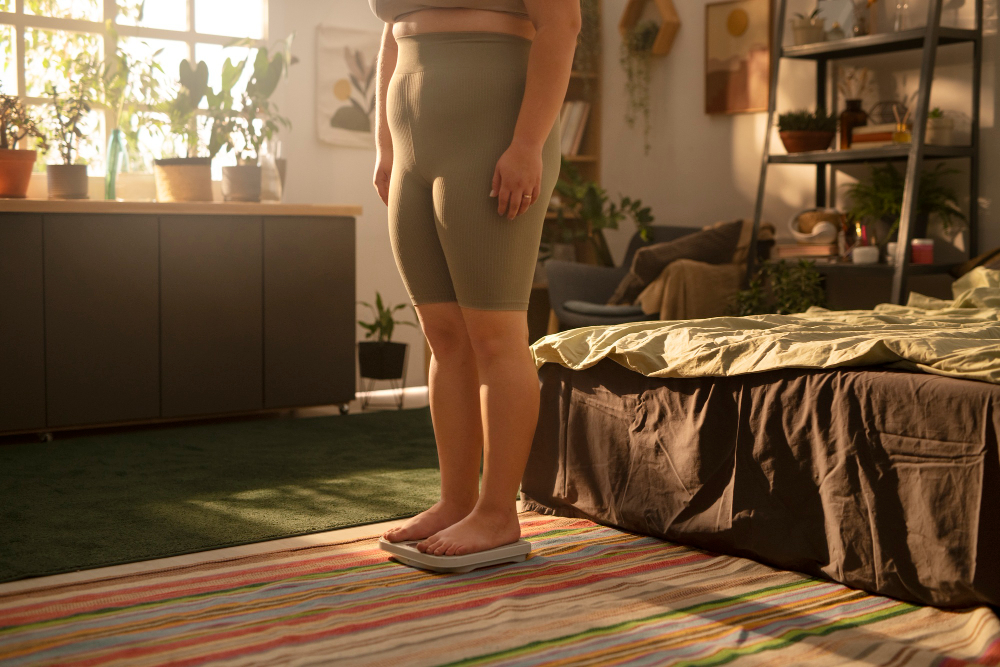Tips to Improve Your Symptoms of Lipedema

Living with lipedema can feel overwhelming, especially when symptoms like swelling, tenderness, and limited mobility affect your quality of life. While there isn’t a cure for lipedema, there are proactive steps you can take to alleviate discomfort and manage symptoms more effectively. This guide will walk you through seven actionable tips that can help, while also discussing advanced options like surgery for those seeking long-term solutions.
If you’re searching for professional support, a trusted lipectomy surgery center like Byrd Lipedema Surgery Center could be the next step toward relief and better health.
What Is Lipedema?
Before we dig into the tips, let's take a moment to understand what lipedema is. Lipedema is a chronic condition characterized by the abnormal accumulation of fat beneath the skin, typically around the hips, legs, and arms. It’s often mistaken for simple obesity or lymphedema, but lipedema is unique in that it causes disproportionate fat deposits that are resistant to diet and exercise.
Common symptoms include:
- Tenderness or Pain: Affected areas can feel sore to the touch.
- Swelling: Fluid retention and inflammation can cause discomfort.
- Skin Sensitivity: Many individuals report skin that bruises easily.
- Limited Mobility & Reduced Quality of Life: The physical and emotional toll of living with lipedema can be significant.
The good news? With a thoughtful approach and support from professionals, you can take steps to improve how you feel.
1. Adopt a Nutrient-Rich, Anti-Inflammatory Diet
While lipedema fat isn’t highly responsive to calorie deficits, eating an anti-inflammatory diet can significantly reduce swelling and ease other symptoms.
Focus on foods that decrease inflammation and promote circulation, such as:
- Leafy Greens like spinach and kale
- Healthy Fats from sources like avocados, nuts, and olive oil
- Fresh Fruits with antioxidant properties, such as berries
- Lean Protein such as fish, chicken, and legumes
Avoid processed foods, high-sugar items, and excessive salt, which can worsen fluid retention and swelling. Every positive dietary change, no matter how small, helps ease discomfort over time.
2. Stay Active to Boost Circulation
Exercise might feel daunting when you’re dealing with soreness and weight gain, but gentle, consistent movement can greatly alleviate symptoms. Aim for low-impact activities that are easy on affected joints and muscles, such as:
- Water-based exercises like swimming or aqua aerobics
- Walking or cycling on flat surfaces
- Gentle yoga or pilates to improve mobility and stretch tight areas
Regular activity helps improve circulation, reduce swelling, and boost your mood—a win-win! Begin with short 15–20 minute sessions, and gradually increase duration as it becomes more comfortable.
3. Use Compression Garments
Compression therapy is one of the most effective tools for managing lipedema. Designed to improve circulation and reduce swelling, these garments apply gentle pressure to affected areas like your legs or arms.
When shopping for compression wear, consult with your doctor or a specialist to ensure you’re choosing appropriate items. The right fit and pressure level can make all the difference in keeping fluid retention under control.
4. Manual Lymphatic Drainage (MLD) Therapy
Many people with lipedema find relief through manual lymphatic drainage (MLD), a specialized massage technique that encourages lymphatic fluid to circulate more effectively.
MLD is often performed by a trained therapist who gently stimulates the lymphatic system, reducing swelling and alleviating tenderness. With regular sessions, you may notice a significant reduction in your discomfort.
5. Stay Hydrated
It may seem counterintuitive, but drinking enough water is crucial for reducing swelling caused by fluid retention. Proper hydration supports optimal lymphatic function and helps flush out toxins that can worsen symptoms.
Aim for at least 8–10 glasses of water daily. Adding slices of lemon or cucumber can make it more enjoyable and provide additional anti-inflammatory benefits.
6. Explore Emotional Support and Counseling
Managing the emotional toll of living with lipedema often requires as much attention as managing physical symptoms. Feelings of frustration, isolation, or sadness are common, and reaching out for support is a powerful form of self-care.
Consider joining a local or online lipedema support group where you can share experiences and advice, or work with a therapist who understands chronic illnesses. This emotional care can do wonders for your confidence and peace of mind.
7. Consider Surgical Options
When symptoms of lipedema severely impact your quality of life and conservative measures aren’t enough, surgery becomes a viable and effective option. Lipectomy is a specialized procedure designed to remove abnormal fat deposits and improve mobility, appearance, and comfort.
At Byrd Lipedema Surgery Center, board-certified specialists use advanced techniques tailored specifically to individuals with lipedema. With safe and professional care, many patients report life-changing results including reduced pain, greater mobility, and improved self-esteem.
If you’re considering a surgical solution, it’s critical to consult an expert who can evaluate your unique circumstances and guide you through the next steps.
Taking Control of Your Symptoms
Living with lipedema doesn’t have to mean living in discomfort. Whether you start with small lifestyle changes or explore more advanced treatments, every step you take empowers your overall well-being.
If you believe surgery might be the right option for you, contact Byrd Lipedema Surgery Center today. Our compassionate team is ready to help you understand your options and create a personalized plan for relief.